Chennai – In a bold and unprecedented move, NSA Ajit Doval has directly confronted foreign media outlets over their biased reporting of Operation Sindoor, challenging them to provide even a single photograph showing damage to Indian infrastructure during the recent military operation. Speaking at the 62nd convocation of IIT Madras, NSA Ajit Doval exposed the systematic bias in international media coverage of India’s strategic military operations.
NSA Ajit Doval’s Direct Challenge to International Press
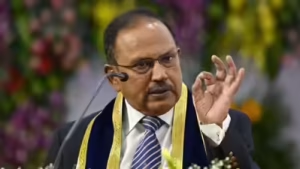
NSA Ajit Doval delivered a scathing critique of foreign media’s portrayal of Operation Sindoor, demanding concrete evidence to support their claims of Pakistani retaliation. The National Security Advisor’s challenge was specific and pointed: “You tell me one photograph, one image, which shows any damage to any Indian structure, even a glass pane having been broken.”
This direct confrontation by NSA Ajit Doval highlighted the stark contrast between international media narratives and ground realities. While foreign press reported extensive Pakistani counter-attacks, NSA Ajit Doval emphasized that available images only showed damage to Pakistani air bases, specifically mentioning 13 air bases across Pakistan, including facilities in Sargodha, Rahim Yar Khan, and Chaklala.
Operation Sindoor: The Strategic Military Response
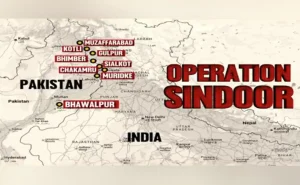

NSA Ajit Doval provided detailed insights into Operation Sindoor, which was launched as a “befitting reply” to Pakistan following the Pahalgam terror attack. The operation demonstrated India’s precise military capabilities and strategic planning under the leadership of NSA Ajit Doval and the defense establishment.
The military operation unfolded in multiple phases, with NSA Ajit Doval revealing that Indian Armed Forces initially destroyed nine terror infrastructure sites in Pakistan and Pakistan-occupied Kashmir through air strikes on May 7. Following Pakistani retaliation, Indian forces significantly damaged Pakistani air force bases on the intervening night of May 9th and 10th, including the strategic Nur Khan base.
Indigenous Defense Technology Excellence


NSA Ajit Doval emphasized the crucial role of indigenous defense capabilities during Operation Sindoor, highlighting how Indian-developed systems played a defining role in the conflict’s success. The National Security Advisor specifically praised the performance of BrahMos missiles, which were extensively used during the operation.
According to NSA Ajit Doval, around 15 BrahMos missiles were fired by the Indian Air Force to target Pakistan Air Force bases, effectively disrupting their ability to launch aircraft and conduct other operations. The precision and effectiveness of these indigenous weapons systems validated India’s growing self-reliance in defense technology.
Precision Strike Capabilities Demonstrated
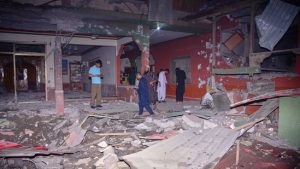

NSA Ajit Doval revealed remarkable details about the precision of Operation Sindoor, stating that the entire operation was completed in just 23 minutes. The National Security Advisor highlighted that nine terrorist targets were identified in a “criss-cross” pattern across Pakistan, far from border areas, demonstrating India’s deep-strike capabilities.
The precision described by NSA Ajit Doval was extraordinary, with the NSA noting that forces knew exactly “who was where” during the operation. This level of intelligence and operational precision showcased India’s advanced surveillance and targeting capabilities under NSA Ajit Doval’s strategic guidance.
Technological Integration in Modern Warfare
NSA Ajit Doval emphasized the importance of integrated defense systems during Operation Sindoor, praising the performance of India’s indigenous radar systems and integrated air control and command systems. These technological achievements represented years of investment in indigenous defense research and development.
The success of these systems during Operation Sindoor, as highlighted by NSA Ajit Doval, demonstrated India’s capability to conduct complex multi-domain operations using primarily indigenous technology. This technological self-reliance has become a cornerstone of India’s defense strategy under NSA Ajit Doval’s leadership.
Air Defense Systems Performance
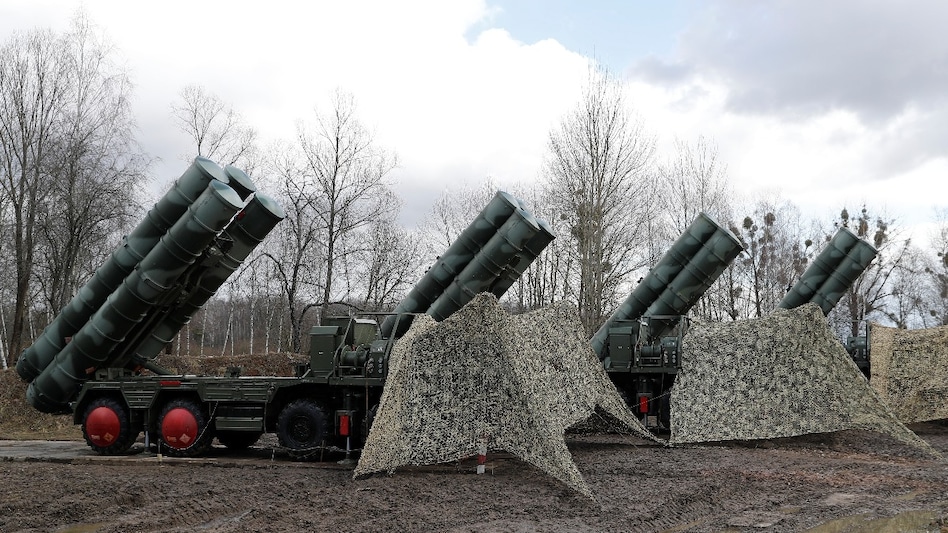

Beyond offensive capabilities, NSA Ajit Doval also highlighted the effectiveness of India’s defensive systems during the conflict. The indigenously developed Akash surface-to-air missile air defense system played a key role in thwarting Pakistani drone attacks targeting Indian assets, showcasing comprehensive defense preparedness.
These defensive successes, as emphasized by NSA Ajit Doval, demonstrated India’s multi-layered approach to national security, combining offensive strike capabilities with robust defensive systems to protect critical infrastructure and military assets.
Foreign Media Bias Exposed
The challenge issued by NSA Ajit Doval to foreign media represents a significant diplomatic and strategic communication initiative. By demanding photographic evidence of damage to Indian infrastructure, the NSA effectively exposed the credibility gap in international media coverage of India’s military operations.
This bold approach by NSA Ajit Doval signals a new era of proactive strategic communication, where India directly challenges misleading narratives rather than accepting biased international coverage. The NSA’s stance reflects growing confidence in India’s military capabilities and strategic position.
Artificial Intelligence as Future Game Changer
During his address, NSA Ajit Doval also emphasized the transformative potential of Artificial Intelligence in national security and defense applications. The NSA described AI as a “game changer” that will fundamentally alter global security landscapes, urging India to make it a focal point for future development.
According to NSA Ajit Doval, AI applications will be diverse, spanning research and development, machine learning, defense, robotics, medicine, and finance. This technological vision outlined by the NSA reflects India’s commitment to maintaining strategic advantages in emerging technologies.
Cessation of Hostilities and Strategic Outcomes
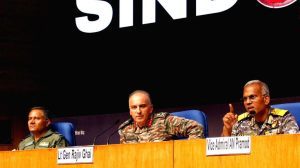

The Operation Sindoor concluded with a cessation of hostilities agreed upon by the Director Generals of Military Operations (DGMOs) of both countries. This outcome, achieved under NSA Doval’s strategic oversight, demonstrated India’s ability to achieve strategic objectives while maintaining broader regional stability.
The successful conclusion of Operation Sindoor, as managed by NSA Doval and the defense establishment, showcased India’s mature approach to conflict resolution, combining decisive military action with diplomatic engagement to achieve sustainable outcomes.
Final Statements
NSA Doval’s bold challenge to foreign media represents a watershed moment in India’s strategic communication approach. By demanding evidence and exposing media bias, the NSA has demonstrated India’s growing confidence in its military capabilities and strategic position, setting new standards for transparency and accountability in international media coverage of Indian military operations.

